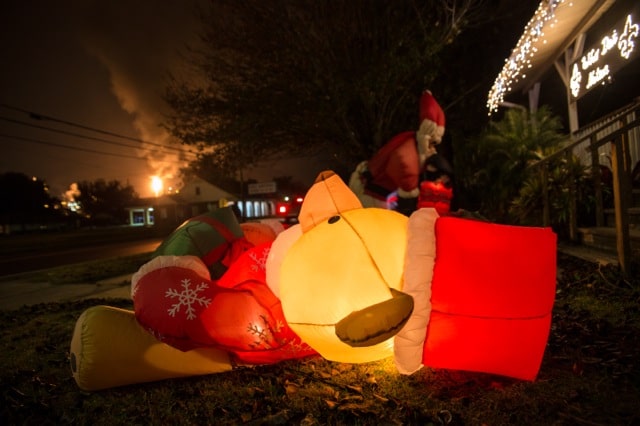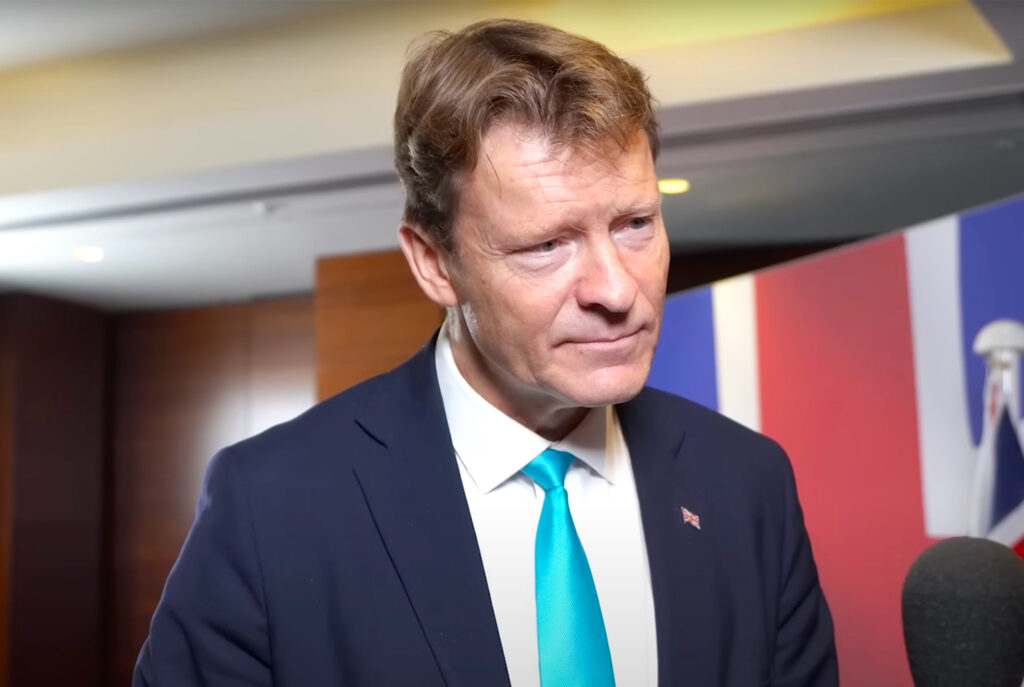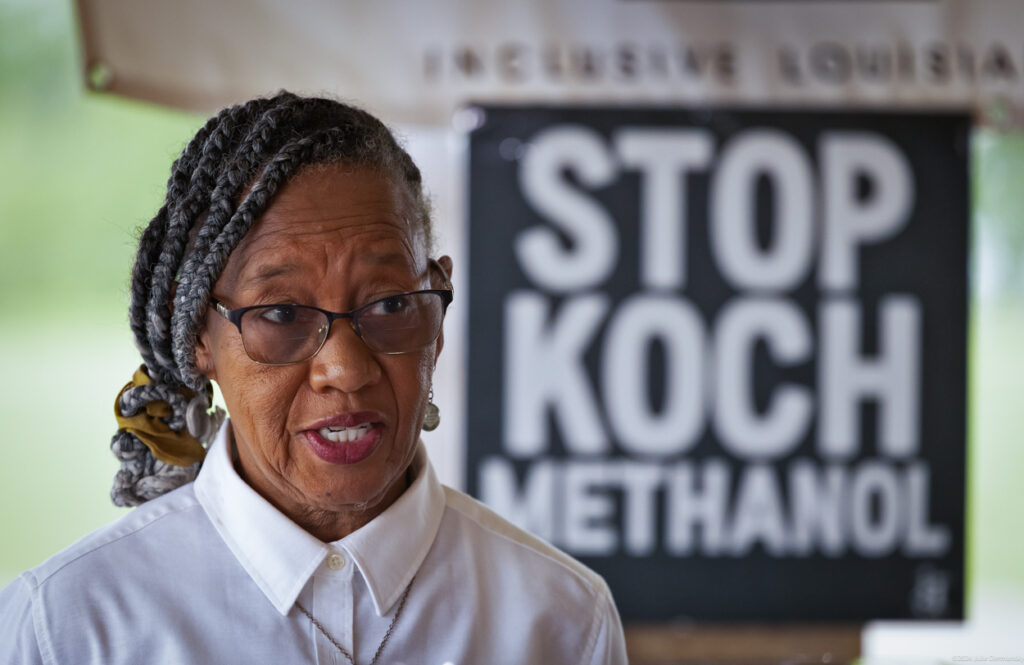The streets of Norco, Louisiana are filled with Christmas lights like lots of U.S. towns this season. But on December 19th, the sky above Norco was illuminated by massive flaring at Shell Chemical’s refinery in town. A friend of mine posted on Facebook that he could see the flares from the Twin Span Bridge, over 50 miles from Norco, so I went to check it out.
Watch what I documented when I visited Norco on December 19th:
When asked about what caused the flares, Shell’s U.S. media spokesperson, Kimberly Windon, replied by email,
“On Thursday, December 19, 2013, the Norco Manufacturing Complex (Chemical) experienced an operational upset on one of its units, which has resulted in flaring and smoke. There were no injuries associated with this situation. All appropriate agencies were notified and we continue to keep the local community informed. For reasons of commercial confidentiality, we do not provide details about the operational status of individual units or information on supply.”
Flares are nothing new to the residents of Norco, especially in the Diamond community, where toxic air pollution has long threatened an African American neighborhood sandwiched between a chemical plant and an oil refinery.
More than a decade ago, air samples collected by Concerned Citizens of Norco and the Louisiana Bucket Brigade revealed cancer-causing chemicals in the air at levels violating Louisiana state standards. Lengthy legal negotiations with Shell over the toxic conditions in Diamond resulted in a victory in 2002 for residents who wished to leave.
But while Shell agreed to purchase many of the homes in Diamond, the victory was bittersweet, coming at the cost of disbanding the historic Diamond community where the largest slave revolt in American history took place in 1811. Now the area has only a few homes left.
Happy Holidays from Cancer Alley
According to Baton Rouge’s The Advocate, “Louisiana is enjoying its biggest industrial boom since the oil bust in the 1980s, and much of the action — tens of billions of dollars of investment — is happening along the 70-mile corridor between New Orleans and Baton Rouge.”
While industry refers to this area as the ‘industrial corridor,’ locals and environmentalists know it as ‘Cancer Alley.’
Anne Rolfes, founder of the nonprofit environmental advocacy group Louisiana Bucket Brigade, told The Advocate she believes Louisiana officials should focus their attention on cleaner development.
“If we keep bringing this dirty business here, we’re going to run out tourists completely,” she explained. “We’re just filling up more and more with pollution. This stuff is going into our waterways, and we’re getting so polluted that we’re not going to be able to alligator-hunt and fish.”
Louisiana has lots of work ahead when it comes to environmental protection.
The residents of Bayou Corne, where a massive sinkhole opened up, can attest to that. Texas Brine is accused of causing that industrial disaster after drilling too close to the edge of a salt dome. As local residents press for accountability, the sinkhole continues to grow.
The BP disaster is still taking a toll on residents along the Gulf Coast. And now the Coast Guard is considering allowing barges to transport fracking wastewater down the Mississippi River, destined for disposal in Louisiana.
However, the year is closing with two new positive developments on the environmental protection front underway in Louisiana.
1. A lawsuit against oil and gas companies filed by the Southeast Louisiana Flood Protection Authority-East, alleging energy companies hastened coastal erosion, weakened the state’s flood-protection defenses and must repair the damage or help pay for flood protection. That case has been followed by similar suits filed by both Jefferson and Plaquemines Parish.
2. A “Green Army” established by former Lt. Gen. Russel Honoré, joined by individuals and environmental groups, to safeguard Louisiana against policies that allow for unregulated industry. They are taking on issues pertaining to the Bayou Corne sinkhole, saltwater intrusion into the Baton Rouge aquifer, coastal erosion, and additional drilling to create storage for natural gas storage in caverns under Lake Peigneur.
If only Louisiana’s leaders would follow the example of concerned citizens who are working to hold industry accountable for reckless practices, the state might stand a chance at saving Louisiana’s vanishing coast from climate change.
Subscribe to our newsletter
Stay up to date with DeSmog news and alerts






